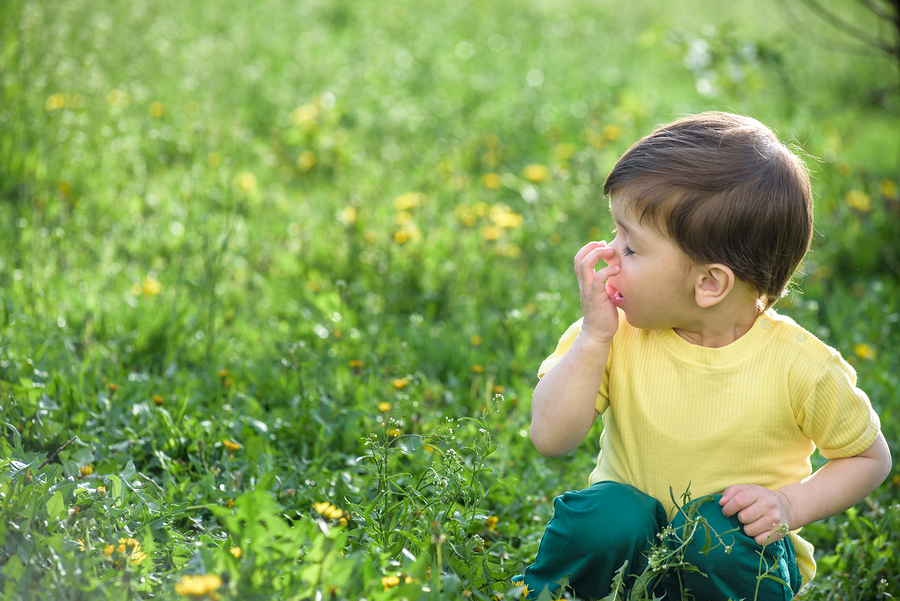Spring is beautiful. It’s a wonderful time of year when the temperatures start to rise and everything is in bloom. But it’s also a key time of year for seasonal allergies, where many suffer from runny roses, itchy eyes and constant sneezing. Depending on what you’re allergic to, allergy symptoms may last through the summer. This is because trees, grass, molds and ragweed are common triggers.
Thankfully, there are steps you can take to curb springtime allergies, from medication to household habits.
Common Culprits of Spring Allergies
The biggest spring allergy trigger is pollen. Trees, grasses and weeds release these tiny grains into the air to fertilize other plants. When a person who’s allergic is exposed to pollen, their body’s defenses haywire.
The immune system mistakenly sees the pollen as a threat and releases antibodies that attack the allergens. This leads to the release of chemicals called histamines into the blood, which triggers the runny nose, itchy eyes, and other symptoms.
Outdoor Triggers
As plants start to bloom, pollen is released into the air. Here are common causes that occur outdoors.
- Trees: Trees begin their seasonal pollination between January and April, depending on climate. Common trees that cause spring allergies include: Alder, Ash, Aspen, Beech, Box Elder, Cedar, Cottonwood, Cypress, Elm, Hickory, Juniper, Maple, Mulberry, Oak, Olive, Palm, Pine, Poplar, Sycamore, and Willow.
- Grass: Grass pollen is highest during the late spring and early summer months. If you suffer from grass allergies, then you will likely experience the problem no matter where you live. Common trees that cause spring allergies include: Bermuda, Fescue, Johnson, June, Orchard, Perennial Rye, Redtop, Saltgrass, Sweet Vernal, and Timothy.
- Flowers: While people commonly believe that flowers blooming in the spring are the cause of pollination. It’s true that flower can cause allergy symptoms if sniffed up close, but they are pollinated by insects instead of the wind.
Indoor Triggers
While common spring allergies occur outdoors, indoor triggers are present all year and noticeably increased during springtime.
- Pet Dander: Being allergic to pet dander is common. Many pets begin to shed their winter coat as the weather gets warmer. This leads to even more dander than normal, resulting in a spike in allergy symptoms.
- Dust Mites: Dust mites exist year-round, but if you participate in spring cleaning, you may notice an increase in symptoms during this time.
Prevention and Treatment
To help those with seasonal allergies cope this spring, here are a few tips and treatment relief.
- Make a Doctor’s Appointment: Every year, allergy symptoms increase. Economic growth, global environment sustainability, temperature, and human-induced changes all contribute to this rising trend. By making an appointment with your allergist in January or February, you’ll be better prepared to treat and relieve your symptoms before they start.
- Take Your Allergy Medication: Taking your allergy medication should be done well before the first sneeze. Begin treating two weeks before your symptoms typically surface. While there isn’t a cure for common spring allergies, immunotherapy, also known as allergy shots, can prevent disease progression.
- Pay Attention to the Weather: A mild winter may cause an early release of pollens from certain trees. If weather reports call for a streak of warm days, begin taking your medication as a precaution.
- Beware of April Showers: Not only will April showers bring more flowers, it might also cause more symptoms for spring allergies. Rain can promote plant and pollen growth. In spring and summer, levels of tree and grass pollination is highest in the evening. In late summer and early fall, ragweed pollination levels are highest in the morning.
Schedule a Consultation
If you have common spring allergies, it is important to seek the right medical help. An allergist/immunologist is a specialist in the diagnosis and treatment of allergies, asthma and other diseases of the immune system. Testing done by allergist can give you precise information about what your child is and is not allergic to. If you are allergic to any substances, you and your allergist can develop a treatment plan to manage or even get rid of your symptoms.
To get you started, discuss and review your treatment options in order find the perfect option for you. Schedule an appointment with Dr. Shukla today, for treatment options.

